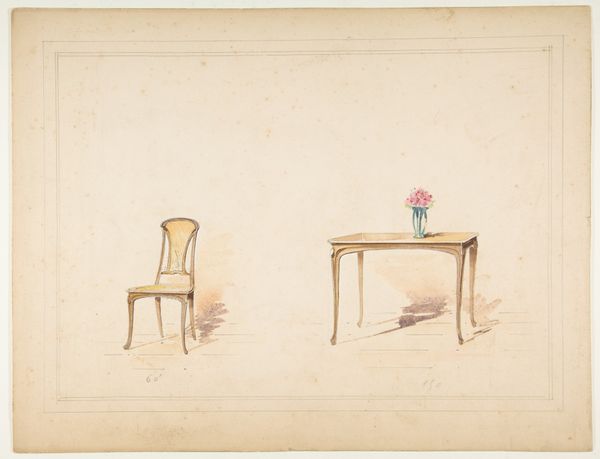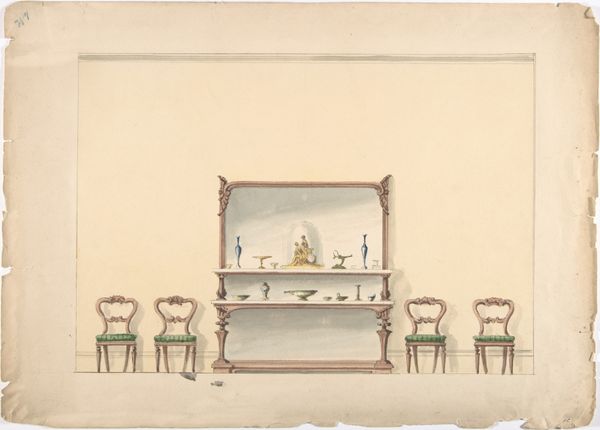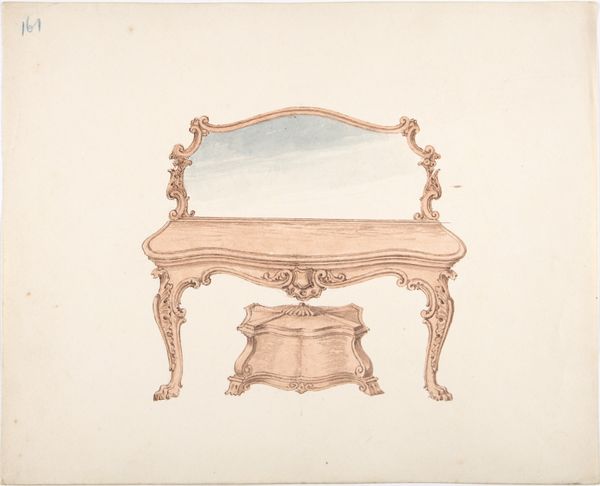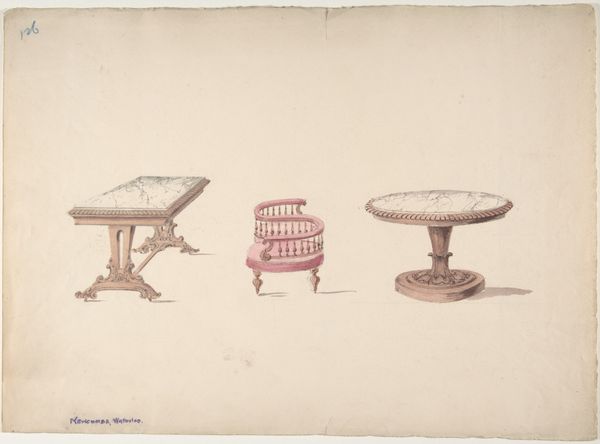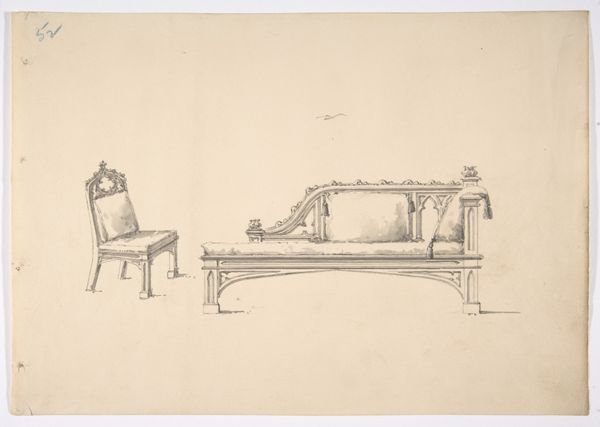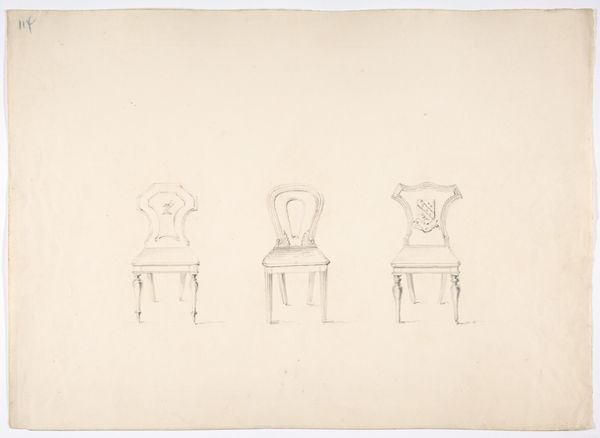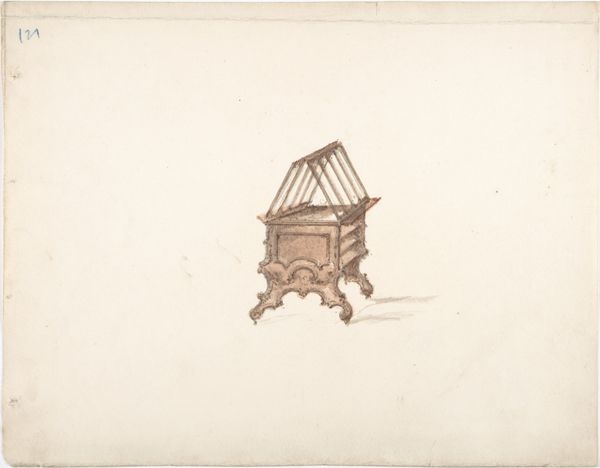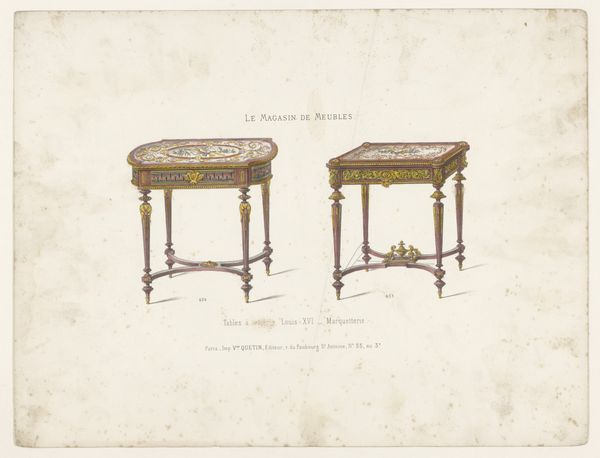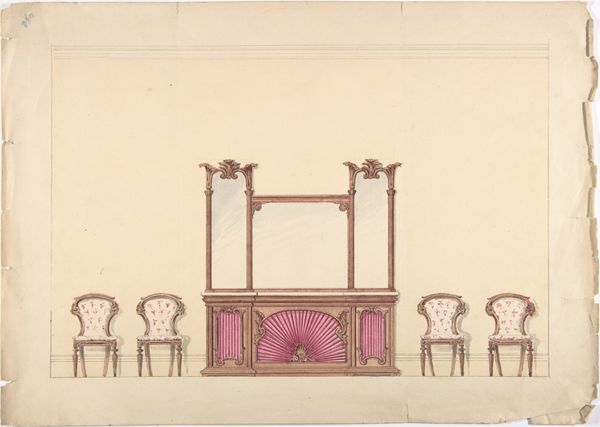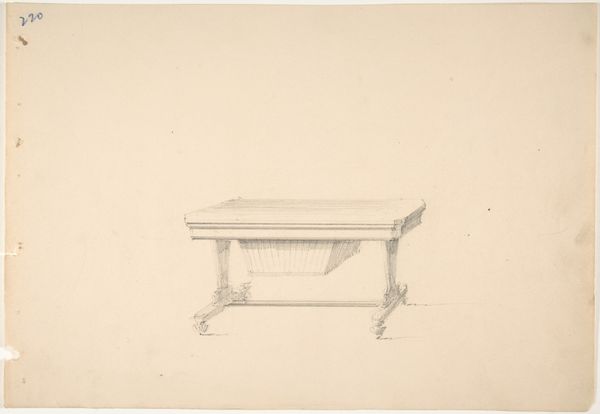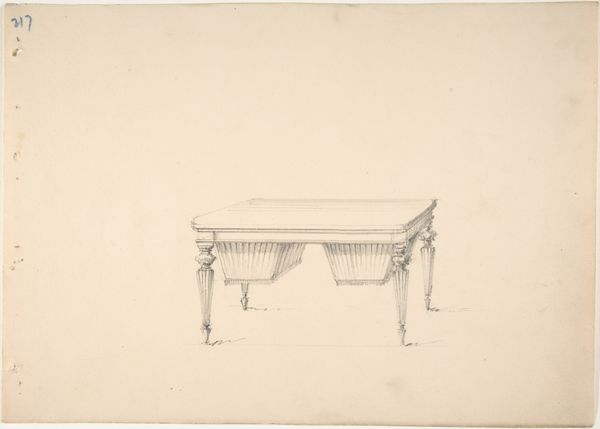
Design for a Marble Topped Table and a Low-backed Chair and a Stool 1800 - 1850
0:00
0:00
drawing, print, paper, watercolor
#
drawing
#
table
#
neoclacissism
# print
#
paper
#
watercolor
#
geometric
#
watercolor
Dimensions: sheet: 8 15/16 x 11 15/16 in. (22.7 x 30.3 cm)
Copyright: Public Domain
Curator: This watercolor drawing, entitled "Design for a Marble Topped Table and a Low-backed Chair and a Stool," was created anonymously sometime between 1800 and 1850. It’s currently part of the Metropolitan Museum's collection. What strikes you first about this composition? Editor: An odd stillness. It’s almost clinical in its presentation. Isolated furniture on a stark white ground – devoid of human presence. Makes me think of furniture as artifact. Curator: That feeling of absence is interesting. These objects, especially rendered with such clear Neoclassical influence, recall a specific era known for its interest in symmetry and order, evoking ideas about social structures of the time. Look at the recurring geometric shapes: do these reflect power dynamics through design? Editor: I'd say definitely. The designs signal hierarchy. The plush, low-backed chair seems made for leisure, maybe conversation; the stool, utilitarian. The marble table broadcasts wealth, acting as a stage for objects meant to impress, while, say, a simple worker might use a wooden box or shared space. This is clearly designed for a particular class, not for communal benefit. Curator: Marble as material does act as a very clear symbolic declaration. Think back to its associations with Roman and Greek statuary and how the application here signifies status, recalling earlier associations of wealth and power. The use of delicate watercolor is also meaningful. It isn’t about accurate rendering so much as communicating an idea of refined taste. Editor: It’s almost as if the rendering itself underscores an intentional remoteness. These colors whisper privilege; there’s no shouting or vibrant declaration of access. It's restrained, and almost chilling, especially in contrast to contemporary ideals. The deliberate design reminds me of whose labor and lives support such carefully-composed environments. Curator: Precisely. That sense of restraint carries symbolic weight, emphasizing a controlled environment, almost an ideal of ordered domesticity during a tumultuous time in European history. It connects to an idea of lasting beauty, removed from daily anxieties. Editor: For me, it reveals a lot about how objects become extensions of social and economic ideologies. It pushes me to reflect on the quiet ways furniture perpetuates narratives around race, class, gender and even the way marble continues to signal privilege within modern decor choices.
Comments
No comments
Be the first to comment and join the conversation on the ultimate creative platform.
